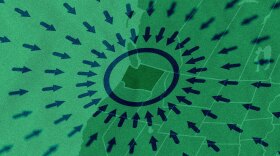It turns out humans and cattle have some of the same fertility issues.
Researchers at Washington State University have received more than a million dollars from the National Institutes of Health to look into what causes lost pregnancies in beef cattle - and also what that can teach us about miscarriages in humans.
It turns out that cattle and humans have the same basic problem, says WSU Assistant Professor, Holly Neiberg. Both species tend to miscarry about a third of the time within the first two to three weeks after insemination. Neiberg is a geneticist.
“I think the general public probably doesn’t appreciate how similar a lot of mammalian species are to one another. Obviously, every species has differences, but we also have a lot of commonality. ”
The hormonal cycles of cattle and humans are similar, she says. We also tend to have twins at about the same rate as we age. And a cow’s gestation, though about a month longer than humans’, is close enough that scientists can use cattle to learn about human physiology.
For this round of funding, Neiberg and two other research biologists – one at WSU and another at the USDA in Montana – have narrowed the issue to problems with the cows’ uterus, not environmental factors. Another study will look at the viability of eggs. A key focus is on the critical phase of pregnancy when a fetus should attach to the uterine wall. They’re looking for genetic markers that indicate fertility.
“So, we’re trying to understand the mechanism of how cows become infertile, so that we can have more healthy cows that are fertile without having to use medications or drugs or things like that.”
In case you’re wondering, she says this is not genetic engineering. It’s the kind of breeding that’s been done for centuries on all kinds of domesticated animals.
Eventually, the researchers hope to help ranchers select for cows that are the most productive, despite some stressors –for example, those that can keep a pregnancy even when they’re lactating. Their results could help save ranchers thousands of dollars on livestock that isn’t reproducing well.
And they could help a lot of people avoid the heartbreak and expense of fertility treatments and high rates of miscarriage.
The funding for this five-year-study comes from the relatively new Eunice Kennedy Shriver National Institute of Child Health and Human Development.
For more background on human infertility, here’s an article from the New York Times Magazine in November 2008 about one writer's “broken uterus” and how she hired a surrogate to bear children for her.







